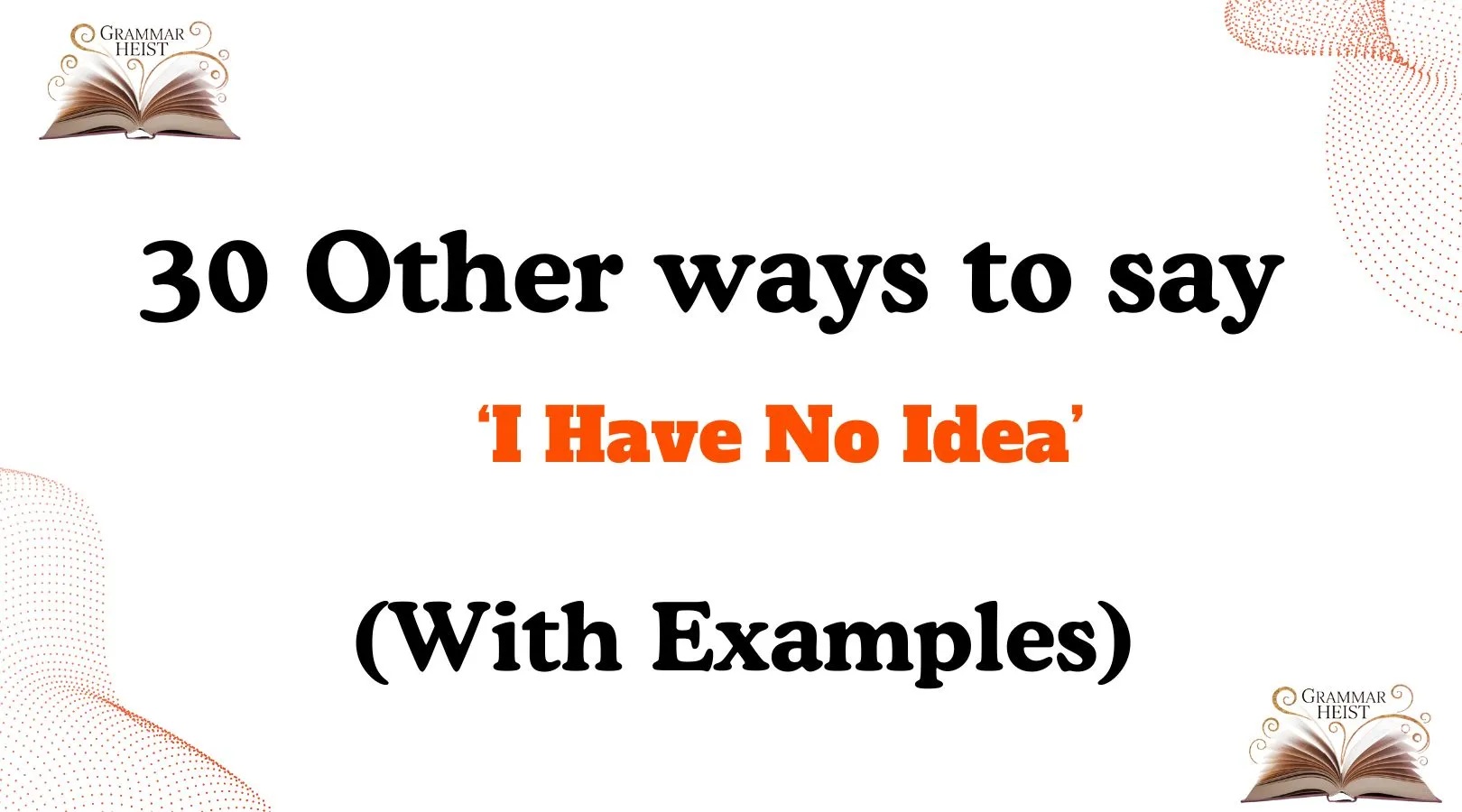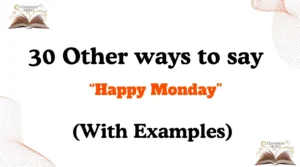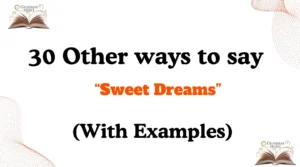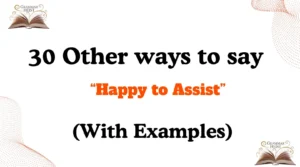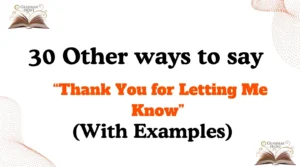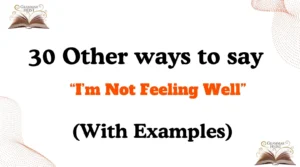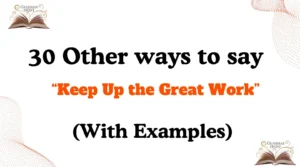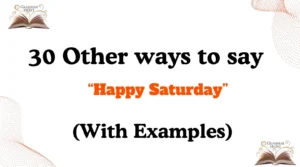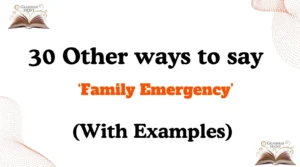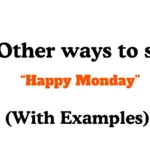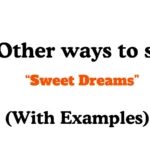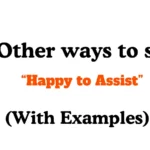Finding the right words to express uncertainty can make a big difference in how your message is received. Instead of bluntly saying “I have no idea,” using warm, thoughtful, or even playful alternatives can make your conversations sound more polite, kind, and engaging. Whether you’re talking to a friend, a colleague, or writing something formal, these phrases help you express uncertainty with empathy and respect.
Below, you’ll find 30 alternative phrases, each explained with real-life scenarios, examples, and tones so you can use them naturally in your everyday conversations.
What Does “I Have No Idea” Mean?
The phrase “I have no idea” simply means that someone does not know the answer to something or lacks information about a topic. It can express surprise, confusion, or just honesty about not knowing.
For example:
- “I have no idea where my keys are.”
- “I have no idea what you’re talking about.”
- “I have no idea how to fix this.”
While it’s commonly used, it can sometimes sound too direct or careless, which is why softer or more polite alternatives can be useful.
Is It Professional or Polite to Say “I Have No Idea”?
Saying “I have no idea” isn’t rude by itself, but in professional or formal settings, it may come across as too blunt or unprepared. Instead, using phrases like “I’m not sure, but I can find out” or “That’s a great question—let me check” shows willingness to help and maintains politeness.
✔️ Professional tone alternative:
- “I’m not certain, but I’ll look into it for you.”
❌ Less polite tone:
- “I have no idea.”
Pros or Cons of Saying “I Have No Idea”
✅ Pros:
- Honest and clear
- Easy to say
- Shows you’re not pretending to know
❌ Cons:
- Can sound blunt or careless
- May seem unhelpful in formal settings
- Doesn’t offer a solution or next step
Synonyms For “I Have No Idea”
- I’m not sure
- I don’t know yet
- That’s a good question
- I’ll need to check on that
- I can’t say for sure
- I honestly don’t know
- I wish I knew
- I haven’t figured it out yet
- I’m still learning
- I’ll look into it
- That’s beyond me right now
- I can’t recall
- Not sure at the moment
- I haven’t thought about that
- I’m drawing a blank
- I don’t have that information
- I’m not certain
- No clue, honestly
- I’m a bit lost here
- That’s new to me
- I don’t think I know
- I’m unsure
- I haven’t heard about that
- I’m not aware of that
- I’m not the right person to answer that
- I’m out of the loop
- I can’t help with that right now
- I’m not up to speed on that
- That’s a mystery to me
- I’ll find someone who knows
1. “I’m Not Sure”
Scenario: When someone asks you a question you don’t have a clear answer to, but you want to sound gentle and polite.
Examples:
- I’m not sure, but I can check for you.
- I’m not sure about that detail.
- I’m not sure, let’s find out together.
Tone: Polite and respectful.
Explanation: This is one of the softest alternatives. It shows honesty while leaving room to help or continue the conversation.
2. “I Don’t Know Yet”
Scenario: When you don’t have the information right now but may know later.
Examples:
- I don’t know yet, but I’ll find out.
- I don’t know yet, let’s wait and see.
- I don’t know yet, but I’ll update you.
Tone: Honest and proactive.
Explanation: This phrase gives a sense of future clarity and responsibility.
3. “That’s a Good Question”
Scenario: When someone asks something unexpected and you want to acknowledge it positively.
Examples:
- That’s a good question—I’ll look into it.
- That’s a good question, and I honestly don’t know right now.
- That’s a good question—let me check.
Tone: Positive and encouraging.
Explanation: Instead of just saying you don’t know, this appreciates the question and keeps the conversation respectful.
4. “I’ll Need to Check on That”
Scenario: When you need time to find or confirm information.
Examples:
- I’ll need to check on that and get back to you.
- I’ll need to check on that before giving a final answer.
- I’ll need to check on that detail.
Tone: Professional and responsible.
Explanation: This alternative shows you’re willing to help even if you don’t know immediately.
5. “I Can’t Say for Sure”
Scenario: When you’re unsure and don’t want to give a wrong answer.
Examples:
- I can’t say for sure, but I can find out.
- I can’t say for sure, sorry.
- I can’t say for sure at this moment.
Tone: Honest and careful.
Explanation: This shows caution and respect for accuracy.
6. “I Honestly Don’t Know”
Scenario: When you want to be fully transparent and personal.
Examples:
- I honestly don’t know, but I’d love to learn.
- I honestly don’t know, sorry.
- I honestly don’t know the answer to that.
Tone: Sincere and humble.
Explanation: Adding “honestly” softens the phrase and makes it sound more genuine.
7. “I Wish I Knew”
Scenario: When you want to express care or empathy along with uncertainty.
Examples:
- I wish I knew, really.
- I wish I knew the answer for you.
- I wish I knew, but I don’t right now.
Tone: Warm and empathetic.
Explanation: This phrase adds an emotional touch and makes your response feel more human.
8. “I Haven’t Figured It Out Yet”
Scenario: When you’re working on something but don’t have the answer yet.
Examples:
- I haven’t figured it out yet.
- I haven’t figured it out yet, but I’m close.
- I haven’t figured it out yet—still learning.
Tone: Casual and open.
Explanation: This shows you’re actively trying to find the answer.
9. “I’m Still Learning”
Scenario: When you want to admit not knowing something with humility.
Examples:
- I’m still learning about that.
- I’m still learning—haven’t reached that point yet.
- I’m still learning, so I’m not sure.
Tone: Humble and curious.
Explanation: This shows growth mindset and positive attitude toward learning.
10. “I’ll Look Into It”
Scenario: When you plan to find the answer.
Examples:
- I’ll look into it and let you know.
- I’ll look into it right away.
- I’ll look into it and update you.
Tone: Responsible and supportive.
]Explanation: This makes your uncertainty sound helpful instead of dismissive.
11. “That’s Beyond Me Right Now”
Scenario: When someone asks something you genuinely don’t know and it’s outside your expertise.
Examples:
- That’s beyond me right now, but I can find someone who knows.
- That’s beyond me right now—I haven’t learned that yet.
- That’s beyond me right now, sorry.
Tone: Honest and respectful.
Explanation: This phrase shows humility and makes it clear that it’s not your area of knowledge without sounding dismissive.
12. “I Can’t Recall”
Scenario: When you once knew the answer but can’t remember at the moment.
Examples:
- I can’t recall right now, but I’ll try to remember.
- I can’t recall the exact details.
- I can’t recall at the moment—let me check.
Tone: Thoughtful and professional.
Explanation: This phrase is gentler than saying “I don’t know” and suggests that the information may come back to you later.
13. “Not Sure at the Moment”
Scenario: When you might know the answer later but don’t have it right now.
Examples:
- I’m not sure at the moment.
- Not sure at the moment, but I’ll get back to you.
- Not sure at the moment—give me a bit of time.
Tone: Neutral and kind.
Explanation: This gives space to follow up later without sounding careless.
14. “I Haven’t Thought About That”
Scenario: When the question is unexpected or new to you.
Examples:
- I haven’t thought about that before.
- I haven’t thought about that, but that’s interesting.
- I haven’t thought about that—let me consider it.
Tone: Curious and reflective.
Explanation: This phrase encourages openness and shows you’re willing to think about the topic.
15. “I’m Drawing a Blank”
Scenario: When your mind suddenly goes blank in the moment.
Examples:
- I’m drawing a blank right now.
- I’m drawing a blank, sorry.
- I’m drawing a blank—give me a second.
Tone: Casual and lighthearted.
Explanation: This is often used in friendly or informal situations and softens the moment with humor.
16. “I Don’t Have That Information”
Scenario: When you simply don’t have the facts someone is asking for.
Examples:
- I don’t have that information right now.
- I don’t have that information, but I’ll get it for you.
- I don’t have that information handy.
Tone: Professional and neutral.
Explanation: This works well in work or formal settings, showing that you’re honest and clear.
17. “I’m Not Certain”
Scenario: When you’re unsure and want to sound professional.
Examples:
- I’m not certain about that.
- I’m not certain, but I can confirm it later.
- I’m not certain right now, sorry.
Tone: Polite and respectful.
Explanation: This is a polished and elegant way to express doubt or uncertainty.
18. “No Clue, Honestly”
Scenario: When you want to sound casual and real with someone close.
Examples:
- No clue, honestly.
- No clue, honestly—I wish I knew.
- No clue, honestly, but we can figure it out.
Tone: Informal and friendly.
Explanation: This is a more relaxed and natural alternative best used in casual conversations.
19. “I’m a Bit Lost Here”
Scenario: When the topic is confusing or unclear to you.
Examples:
- I’m a bit lost here—can you explain?
- I’m a bit lost here, sorry.
- I’m a bit lost here, could you repeat that?
Tone: Gentle and open.
Explanation: This phrase invites clarification and shows you’re trying to understand.
20. “That’s New to Me”
Scenario: When hearing or learning something for the first time.
Examples:
- That’s new to me, interesting.
- That’s new to me—I hadn’t heard of it before.
- That’s new to me, but I’d like to know more.
Tone: Curious and warm.
Explanation: This phrase sounds positive and shows interest in learning.
21. “I Don’t Think I Know”
Scenario: When you believe you don’t have the answer but aren’t 100% sure.
Examples:
- I don’t think I know the answer to that.
- I don’t think I know, but I might be wrong.
- I don’t think I know—let’s double-check.
Tone: Honest and cautious.
Explanation: This adds softness to the statement, making it sound less final.
22. “I’m Unsure”
Scenario: When you want a very simple and neutral way to express doubt.
Examples:
- I’m unsure about that.
- I’m unsure right now.
- I’m unsure, but we can find out.
Tone: Polite and direct.
Explanation: This short phrase works well in both formal and informal conversations.
23. “I Haven’t Heard About That”
Scenario: When someone shares new information or news.
Examples:
- I haven’t heard about that.
- I haven’t heard about that—tell me more.
- I haven’t heard about that yet.
Tone: Curious and honest.
Explanation: This shows you’re open to learning and not defensive.
24. “I’m Not Aware of That”
Scenario: When you’re unaware of something someone assumed you knew.
Examples:
- I’m not aware of that, actually.
- I’m not aware of that news.
- I’m not aware of that update.
Tone: Polite and professional.
Explanation: This is often used in formal or workplace situations.
25. “I’m Not the Right Person to Answer That”
Scenario: When the question is outside your role or knowledge area.
Examples:
- I’m not the right person to answer that, but I can direct you to someone who can.
- I’m not the right person to answer that question.
- I’m not the right person for this, but I can help you find the right one.
Tone: Professional and helpful.
Explanation: This shows clarity and support, without shutting the conversation down.
26. “I’m Out of the Loop”
Scenario: When you haven’t been updated about something.
Examples:
- I’m out of the loop on that one.
- I’m out of the loop—what happened?
- I’m out of the loop, sorry.
Tone: Casual and open.
Explanation: This is common in friendly or team conversations and lightens the tone.
27. “I Can’t Help with That Right Now”
Scenario: When you don’t have the knowledge or ability to help at the moment.
Examples:
- I can’t help with that right now.
- I can’t help with that right now, but I can try later.
- I can’t help with that right now—maybe someone else can.
Tone: Polite and honest.
Explanation: This keeps your tone helpful and respectful, even when you can’t assist.
28. “I’m Not Up to Speed on That”
Scenario: When you’re behind on a topic or situation.
Examples:
- I’m not up to speed on that yet.
- I’m not up to speed on that, can you fill me in?
- I’m not up to speed, sorry.
Tone: Professional and clear.
Explanation: This is great for workplace conversations and shows you’re open to updates.
29. “That’s a Mystery to Me”
Scenario: When something is truly puzzling and you want to sound lighthearted.
Examples:
- That’s a mystery to me.
- That’s a mystery to me, too.
- That’s a mystery to me—maybe we’ll figure it out together.
Tone: Playful and warm.
Explanation: This makes your uncertainty sound friendly and approachable.
30. “I’ll Find Someone Who Knows”
Scenario: When you don’t know the answer but want to help find it.
Examples:
- I’ll find someone who knows the answer.
- I’ll find someone who knows and let you know.
- I’ll find someone who knows more about this.
Tone: Supportive and proactive.
Explanation: This is a great alternative in professional settings because it shows initiative and teamwork.
📝 Conclusion
Expressing uncertainty doesn’t have to sound cold or dismissive. By using these 30 thoughtful alternatives to “I have no idea,” you can keep your conversations warm, respectful, and engaging. Whether it’s with friends, colleagues, or in formal situations, choosing your words wisely builds trust, shows emotional intelligence, and leaves a positive impression.

Emma Rose is a dedicated writing expert with a passion for helping others enhance their communication skills. With a strong background in grammar, language structure, and style, Emma empowers individuals to write with clarity, confidence, and impact. Her approach combines a keen attention to detail with a supportive, personalized touch, ensuring each person she works with improves and grows in their writing journey.
